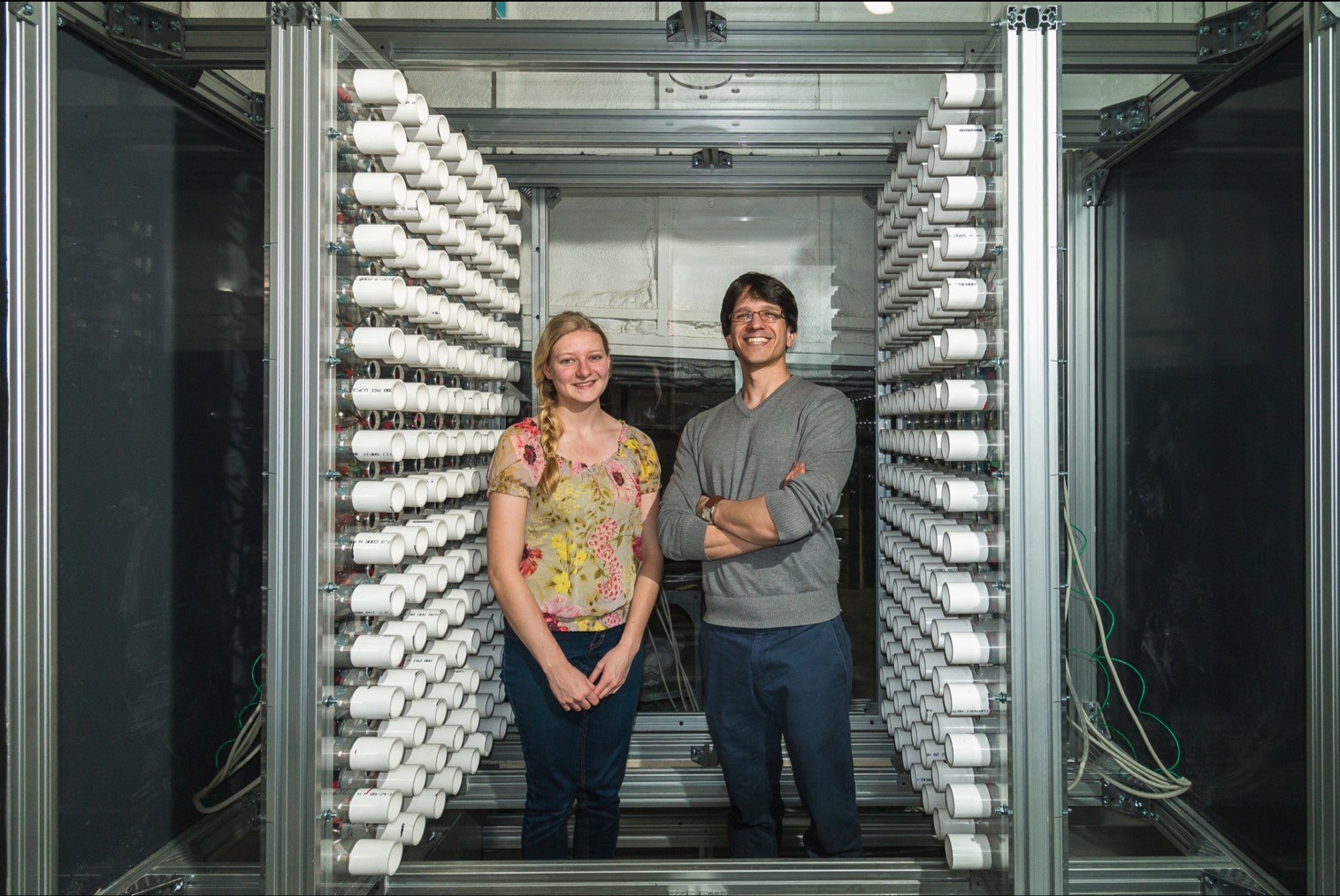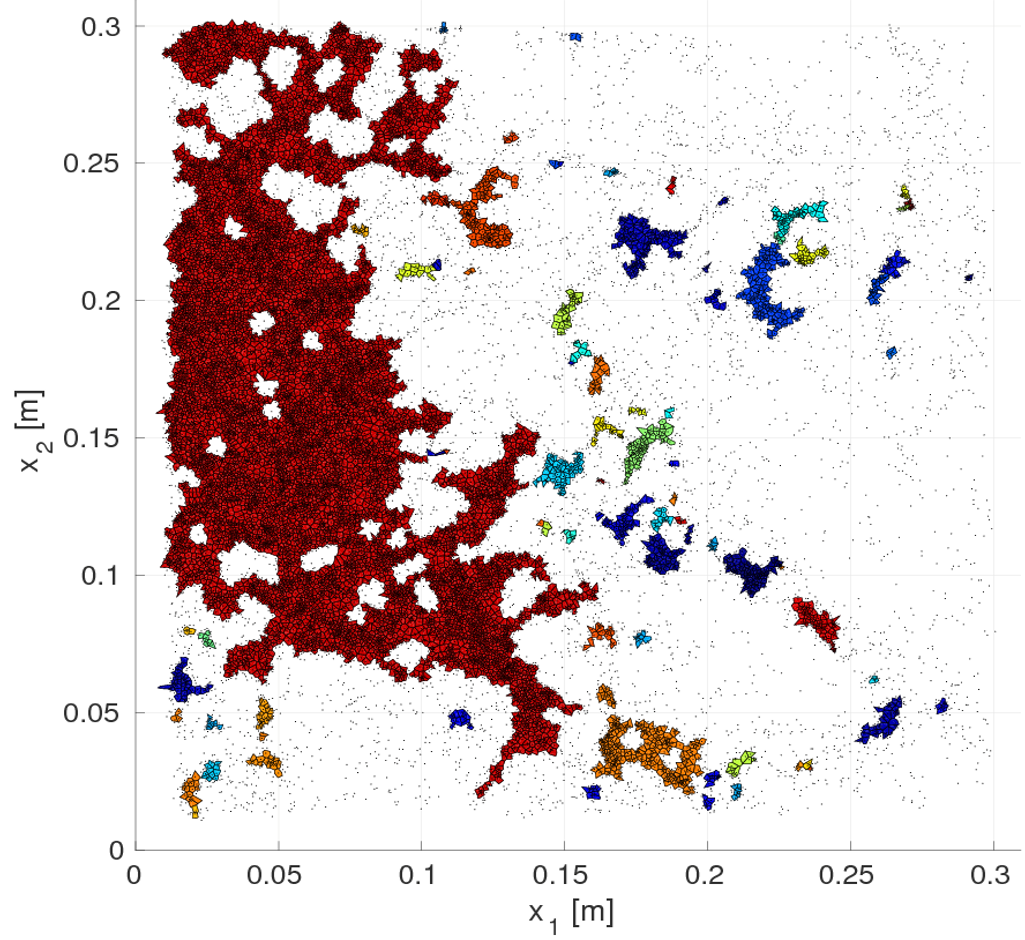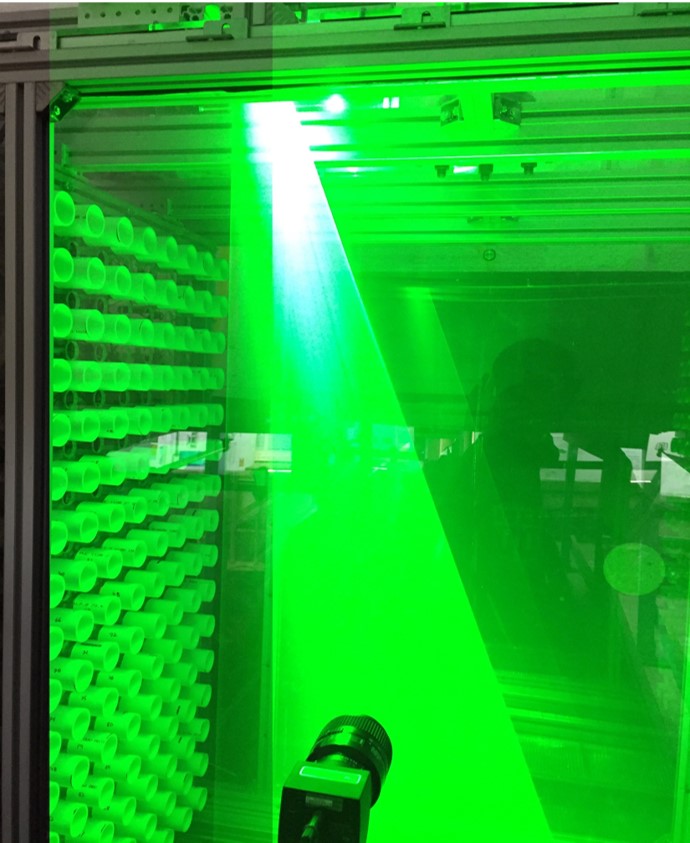 |
Prof. Filippo Coletti and PhD student Luci Baker |
Professor Filippo Coletti was recently awarded two grants from the U.S. Department of Defense to study air turbulence. The first project funded by the Army Research Office, Dust, sand, and turbulence: Transport and feedback in the near-surface environment, will study the key challenge in modeling dust and sand transport throughout the atmosphere. The present project aims at achieving a predictive understanding of dust and sand transport in the atmospheric surface layer, bridging the gap between the existing knowledge on particle-turbulence interactions at the micro-scale and atmospheric dynamics at the macro-scale. The strategy is to combine detailed laboratory observations of turbulence/dust interaction, carried out at the University of Minnesota by Coletti’s group, with large-scale and high-resolution numerical simulations, carried out by collaborators at the University of Notre Dame. The goal is to ultimately inform near-surface transport models, which are crucial for accurately connecting saltation rates and airborne dust/sand concentrations.
 |  |
|
Clusters of dust particles in turbulence | Laser and camera set up for Particle Image Velocimetry |
The second project funded by the Office of Naval Research, Control of spray properties by gas flow turbulence, looks at the interaction between spray droplets and gas turbulence in an effort to understand the efficient combustion of liquid fuel spray. The objective of this project is to reveal the mechanisms by which the turbulence properties of the gas flow influence spray penetration, droplet size distribution, and gas entrainment; and to show how the intelligent choice of the turbulence parameters can lead to an enhanced spray performance. An experimental facility designed and built by Coletti and his research team will be leveraged. This facility consists of a zero-mean-flow chamber featuring hundreds of individually actuated jets, which create intense air turbulence of specified properties over a volume of around one cubic meter. By using multi-resolution high speed PIV (Particle Image Velocimetry), PTV (Particle Tracking Velocimetry) and shadowgraphy, the air flow motion and the spray properties will be simultaneously characterized. The goal is to provide new and fundamental insight into the interaction between liquid droplets and gas turbulence.